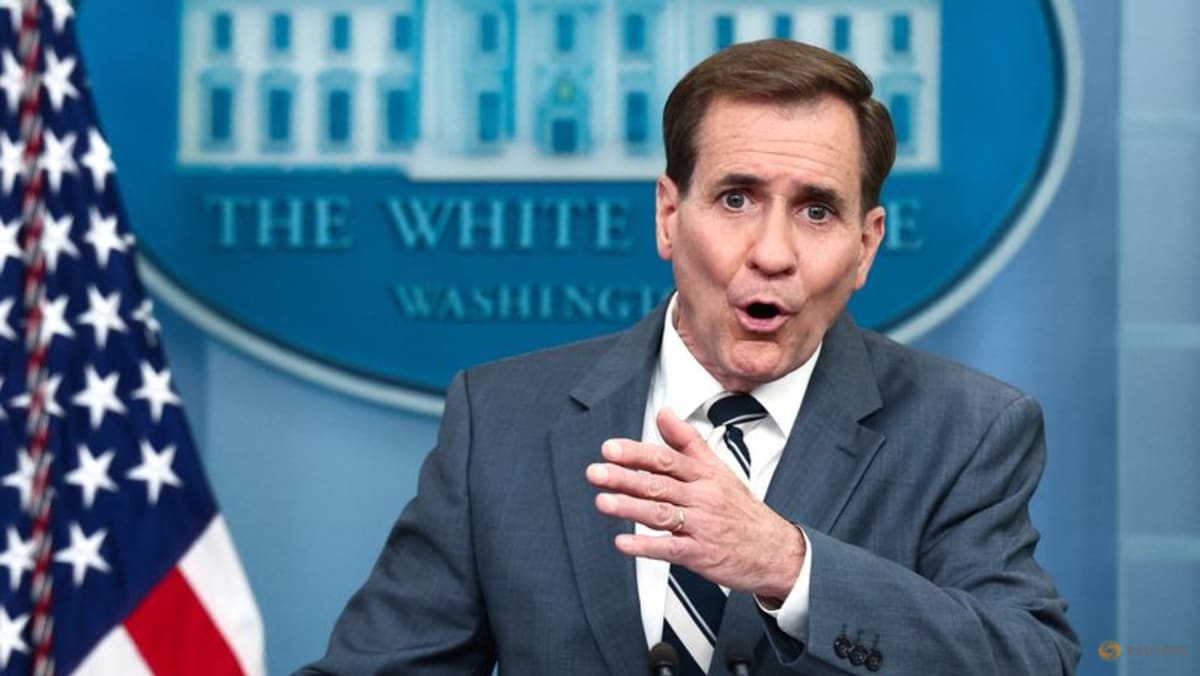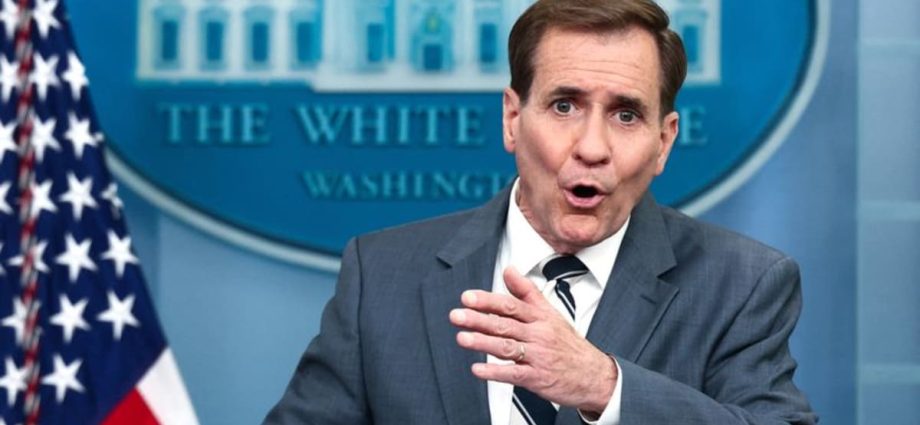
Kirby said if China wanted to deliver the message that the US was not welcome in the area or that it wanted American aircraft and vessels to stop flying and sailing in support of international law, that would not succeed.
“It’s not gonna happen,” Kirby said.
US SEEKS “PREDICTABLE RELATIONSHIP”
Despite the heightened tensions, US State Department spokesperson Vedant Patel said that President Joe Biden’s administration is “looking to continue to have a predictable relationship with the PRC”.
“President Biden has been clear we don’t seek any kind of new Cold War, and our competition must not spill over into conflict,” Patel told reporters.
The US military said the American destroyer Chung-Hoon and Canadian frigate Montreal were conducting a “routine” transit of the strait on Saturday when the Chinese ship cut in front of the US vessel, coming within 137m.
In the video released by the US Navy, the Chinese ship can be seen sailing across the path of the Chung-Hoon in calm waters. The Chung-Hoon does not change course.
“The US had caused trouble and provocation first, while China dealt with it in accordance with the law and regulations afterwards,” Wang told a press conference on Monday.
Some independent analysts said the latest incidents suggest a more aggressive shift in tactics by China against what it sees as an encroachment by US and allied forces. But US officials have been describing a more confrontational posture by Beijing’s forces for at least the past year.
“China is only increasing the chances for miscalculation – namely ships or aircraft accidentally colliding – that could then spiral into armed conflict,” said Derek Grossman, senior defense analyst at the RAND Corporation, a US think tank.
In 2001, a US spy plane made an emergency landing on China’s Hainan island after a collision with a Chinese fighter jet, whose pilot died.

